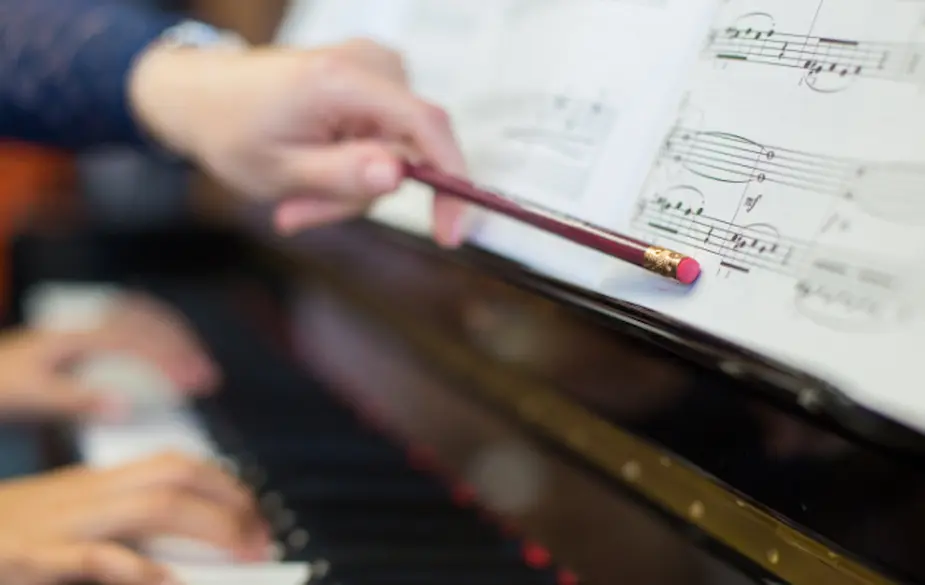Sight-reading can and should be a pleasure for you and your pupils, according to Kathryn Page, if a few basic principles are mixed with imagination and enthusiasm
Confident and enjoyable sight-reading skills should be the entitlement of all pianists.
In theory the overwhelming majority of pupils who attend piano lessons for six or more years should be able to read through new scores just as effectively as students can read prose after attending primary school for six or more years. In most cases this is sadly not the case.
Pupils become obsessed with perfecting three pieces at a time for grade exams. As a consequence of their exclusive work on a limited number of notes, they end up developing short-term memory skills for the pieces that they are studying, so that at any one time they can only play three pieces at most. Once the exam is over, the three pieces learnt so painstakingly deteriorate, eventually to be totally replaced by another set of three from a higher grade.
Clearly ‘three-piece syndrome’ is not healthy. It would be so much better if our pupils had good sight-reading skills. If they could cope with reading new notes easily, their whole perception of playing would change. The monotony of practising for exams only would be released and pupils could decide to explore many new works, just as pupils studying for English Literature exams can read material away from the set books prescribed.
In order to arrive at this utopian goal of effortless sight-reading, it is important to approach the subject holistically. Reading skills are a reflection of many different aspects of learning. Here are some of the skills that we need to encourage and cultivate in all our pupils in order to make them virtuoso readers.
1. Keyboard coordination

In order to read fluently you should limit the amount of time you look down at your hands as much as possible. Keeping your eyes fixed on the music is a vital secret for success. In order to be able to play without looking you should spend lots of time, especially in the early lessons with beginners, instilling an awareness in their ‘inner eye’ of where all the black notes are. Get pupils to play simple five-finger exercises with their eyes shut and then ask them to play all the intervals up to and including a perfect fifth.
Can they play triads, arpeggio and broken-chord patterns with their eyes closed? ‘Blind practice’ helps to stimulate awareness and so is excellent not only for developing sight-reading, but also for empowering technical facility around the keyboard.
2. Theoretical knowledge

Grasping why notes are written in the way they are is essential for swift and effective processing skills at all levels.
It follows that pupils should never tackle compound time-signature pieces without understanding how the rhythm works. They should be aware of why a sharp is used rather than a flat and be able to play the basic harmonies through simple block chords in an arpeggiated piece.
3. Reading from the bottom upwards

So many pupils are obsessed with the melodic line! Their eyes go to the ‘tune’ and they tend to view the bass clef as a secondary consideration. Time and experience has shown that it is much more effective to read new notes from the chord foundation upwards. Get the left hand firmly established in the first instance, and the melodic line will follow much more easily.
4. Anticipation
Musical experience is everything. If you know all the Mozart sonatas intimately as a listener, then as a player you will be in a much stronger position to sight-read movements from them than players who do not listen to any Mozart.
The ability to guess and move into a likely sequence of notes is invaluable and will be refined as a pupil’s ‘musical experience portfolio’ expands.

W.A Mozart
5. Rhythmic control
Wrong notes can be easily forgiven by listeners if there is a sure sense of pulse. Indeed, the ability to play with strong rhythm is one of the most important factors in sight-reading success. It is best developed via duet playing – with you as the teacher playing with your pupils at every lesson!
Nowadays there is a wealth of material available for players at every level, so there is no excuse not to get stuck in (especially helpful are duets with five-finger-pattern lines for the pupil, while the teacher plays more sophisticated ‘accompaniment’ parts). Sight-reading improves exponentially when it is undertaken as part of a duo or chamber music ensemble!
6. Artistic sensitivity
Ultimately sight-reading will be deeply pleasurable and relatively charged when the pupil is fired up by the musical substance of what is being tackled. Never concentrate exclusively on ‘right’ or ‘wrong’ pitches in new repertoire: always try to get your pupils to be aware of characterisation, musical shape, colours, voicing and pedalling. Ironically when the emphasis moves away from sterile accuracy in a lesson, pupils tend to become much more accurate!
In summary, sight-reading will become an inspirational, fun activity when it is approached with the creativity and musical energy that it deserves.
In every issue of Pianist, Kathryn Page hosts the Piano Teacher Help Desk. Download our latest issue to read her most recent submission.








